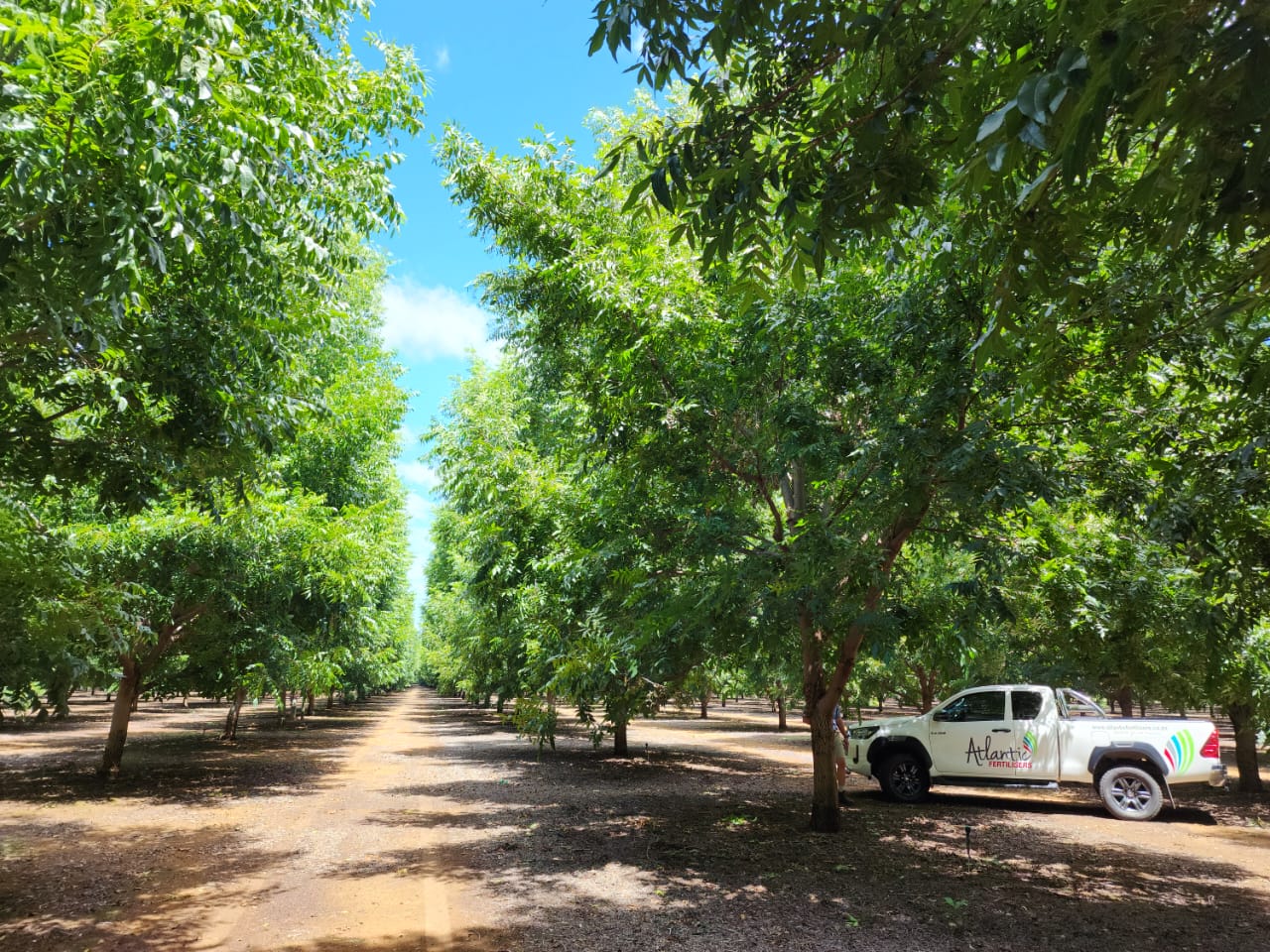Pecans alternating behaviour is a frustrating occurrence, with producers constantly looking for solutions.
This trait causes the harvest to be up to standard the one year, and then underperforming the next. This occurrence does not only take place every second year over different orchards, but usually over an entire area during a season.
The main reason alternate bearing takes place is the physiological cycle of the crop that is influenced by the season’s climate. It’s therefore an inherent characteristic of the crop and definitely something you need to come to terms with when you are a pecan producer.
The following factors contributes:
Living biotic factors – e.g., microbial life in the rhizosphere, or non-living abiotic factors that cannot be managed, e.g. wind, temperature and rain.
Other factors that can be managed is pruning practices, annual fertilisation strategies and moisture management can alleviate or even increase the degree of alternating bearing. Emphasis should be laid on the factors that we have control over.
Cultivar selection has the greatest influence on yield. Cultivars that produce large yields early after establishment are more likely to bear alternating harvests as they age. The initiation and growth of the bud just behind the nut cluster in the period of nut fill will determine whether the next season will be an “on” or an “off” year. It’s not clear what exactly causes the initiation of the bud as research is still being done on this topic.
Balanced management principles and a favourable season, together with a fertilisation program focusing on building and maintaining reserves throughout the season, can mitigate the effect of alternate bearing. However, bear in mind that this is an inherent characteristic of the crop itself, and it must therefore be taken into account when planning for upcoming seasons.
Contact the Atlantic Fertilisers team to assist with a feeding program to plan for the season to come.

Source:
- magazine, P.S. (2021) Insight into alternate bearing – do carbohydrates drive it?, Pecan South Magazine. Available at: https://www.pecansouthmagazine.com/magazine/article/insight-into-alternate-bearing-do-carbohydrates-drive-it/ (Accessed: 18 July 2023).
- Miller, K. (no date) Regenerative Agriculture Archives, Noble Research Institute. Available at: https://www.noble.org/news/publications/ag-news-and-views/2014/october/pecan-alternate-bearing-challenges-production/ (Accessed: 18 July 2023).









